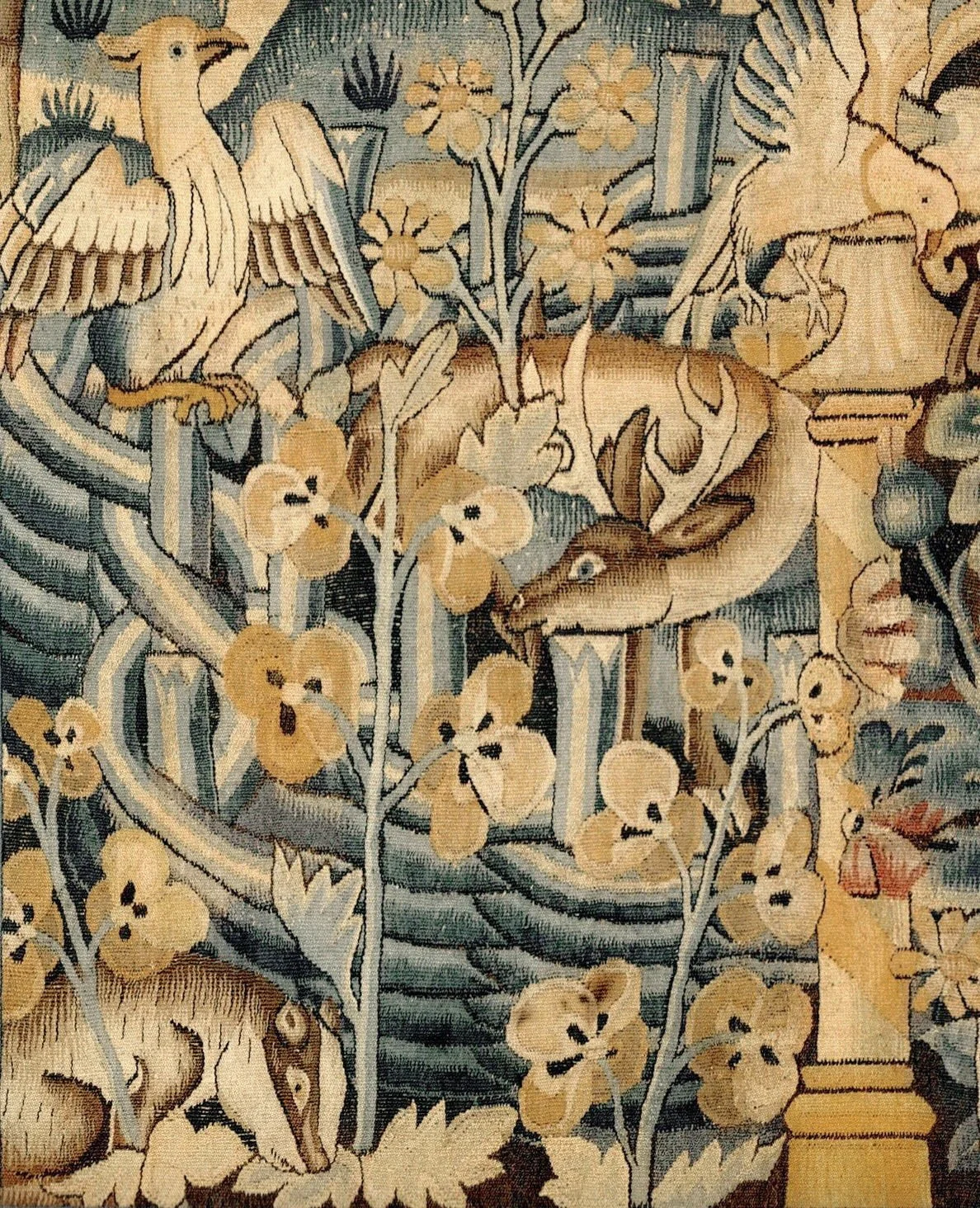Antique Textiles
Textiles have been, throughout the course of human history and, without doubt, prehistory, integral to society, civilisation, and religion. Whether intended primarily as an aid to comfort and warmth, or as a signifier of wealth, status, or artistic achievement – and there is much overlapping between all of these – the woven cloth and its many embellishments have reflected and transmitted the intentions and ideals of the age and the circumstances that gave rise to the need to produce them.
A 16th century tapestry, such as the grand hanging of which this would have formed a small part, spoke of the resources - financial, technical and practical – required to produce it; hinted at the richness of the natural world with its depictions of animals and plants (in the case of many giant leaf tapestries, these plants were newly discovered by the voyagers sent out by a curious and covetous Europe); and at a more basic level, furnished insulation for the house in which it was situated.
An embroidered border of the same period, exquisitely worked with cupids and lions, most likely framed a table place setting, with the table cover edged in the same design. Cushion covers such as this 17th century Dutch example, and this slightly later English embroidered linen, have so far exceeded in their decoration the functional use to which once they would have been put that it is easy now to lose sight of this original utility. They do, however, manifest the worth with which the makers and eventual owners imbued these objects, and the human need to ornament an environment.
This is also the case with more personal adornment, as is well expressed by this beautifully stitched silk and gilt metal thread apron; and in other textiles intended to enrich private and public spaces. A rich ciselé velvet would have been much coveted for the upholstery of chairs, for drapes, or for walls, and would have cost a great deal, while a young lady would have made the needlework picture here in order to prove her skill.
These textiles have survived and, although they can suggest to varying degrees the eras in which they were created, and bring to mind the hands through which they have passed, each still serves to provoke a sense of its own beauty.
